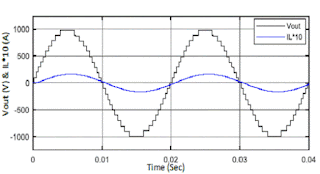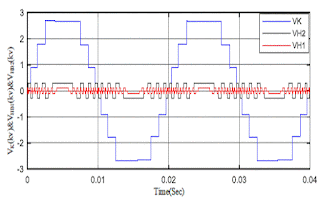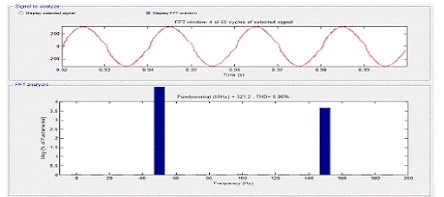ABSTRACT:
This paper presents a new compact three-phase
cascaded multilevel inverter (CMLI) topology with reduced device count and high
frequency magnetic link. The proposed topology overcomes the predominant
limitation of separate DC power supplies, which CMLI always require. The high
frequency magnetic link also provides a galvanic isolation between the input
and output sides of the inverter, which is essential for various grid-connected
applications. The proposed topology utilizes an asymmetric inverter configuration
that consists of cascaded H-bridge cells and a conventional three-phase
two-level inverter. A toroidal core is employed for the high frequency magnetic
link to ensure compact size and high-power density. Compared with counterpart
CMLI topologies available in the literatures, the proposed inverter has the
advantage of utilizing the least number of power electronic components without
compromising the overall performance, particularly when a high number of output
voltage levels is required. The feasibility of the proposed inverter is
confirmed through extensive simulation and experimentally validated studies.
KEYWORDS:
1. Cascaded multilevel inverter
2. Isolated dc-supply
3. Asymmetric multilevel inverter
4. High frequency magnetic link
SOFTWARE: MATLAB/SIMULINK
BLOCK DIAGRAM:
Fig.1 Proposed cascaded multilevel inverter, (a) Proposed inverter when H-bridges are considered as cascaded cells, (b) A basic H-bridge
Fig.2 Simulation results for a dynamic change in the load from nearly unity PF (100.31∠4.49°Ω) to 0.8 lagging PF (127.13∠38.13°Ω): (a) line voltage waveforms, (b) line current waveforms
Fig. 3 Simulation results for a dynamic change in the load magnitude with the same PF: (a) line voltage waveforms, (c) line current waveforms
Fig. 4 Simulation results of rectifier output currents: IC, I1, I2 and the MLI output voltage and current, VAB and IAN for asymmetric CHB input voltages
Fig. 5 Simulation results of rectifier output currents: IC, I1, I2 and the MLI output voltage and current, VAB and IAN for unbalanced CHB input voltages
REFERENCES:
[1] W. Kawamura, M. Hagiwara, H. Akagi, M. Tsukakoshi, R. Nakamura, and S. Kodama, "AC-Inductors Design for a Modular Multilevel TSBC Converter, and Performance of a Low-Speed High-Torque Motor Drive Using the Converter," IEEE Trans. Ind. Appl., vol. PP, pp. 1-1, 2017.
[2] V. Sonti, S. Jain, and S. Bhattacharya, "Analysis of the Modulation Strategy for the Minimization of the Leakage Current in the PV Grid-Connected Cascaded Multilevel Inverter," IEEE Trans. Power. Electron., vol. 32, pp. 1156-1169, 2017.
[3] B. Xiao, L. Hang, J. Mei, C. Riley, L. M. Tolbert, and B. Ozpineci, "Modular cascaded H-bridge multilevel PV inverter with distributed MPPT for grid-connected applications," IEEE Trans. Ind. Appl., vol. 51, pp. 1722-1731, 2015.
[4] C. Gan, J. Wu, Y. Hu, S. Yang, W. Cao, and J. M. Guerrero, "New Integrated Multilevel Converter for Switched Reluctance Motor Drives in Plug-in Hybrid Electric Vehicles With Flexible Energy Conversion," IEEE Trans. Power. Electron., vol. 32, pp. 3754-3766, 2017.
[5]
E. Babaei, S. Laali, and Z. Bayat, "A single-phase cascaded multilevel
inverter based on a new basic unit with reduced number of power switches,"
IEEE Trans. Ind. Electron., vol. 62, pp. 922-929, 2015.






































